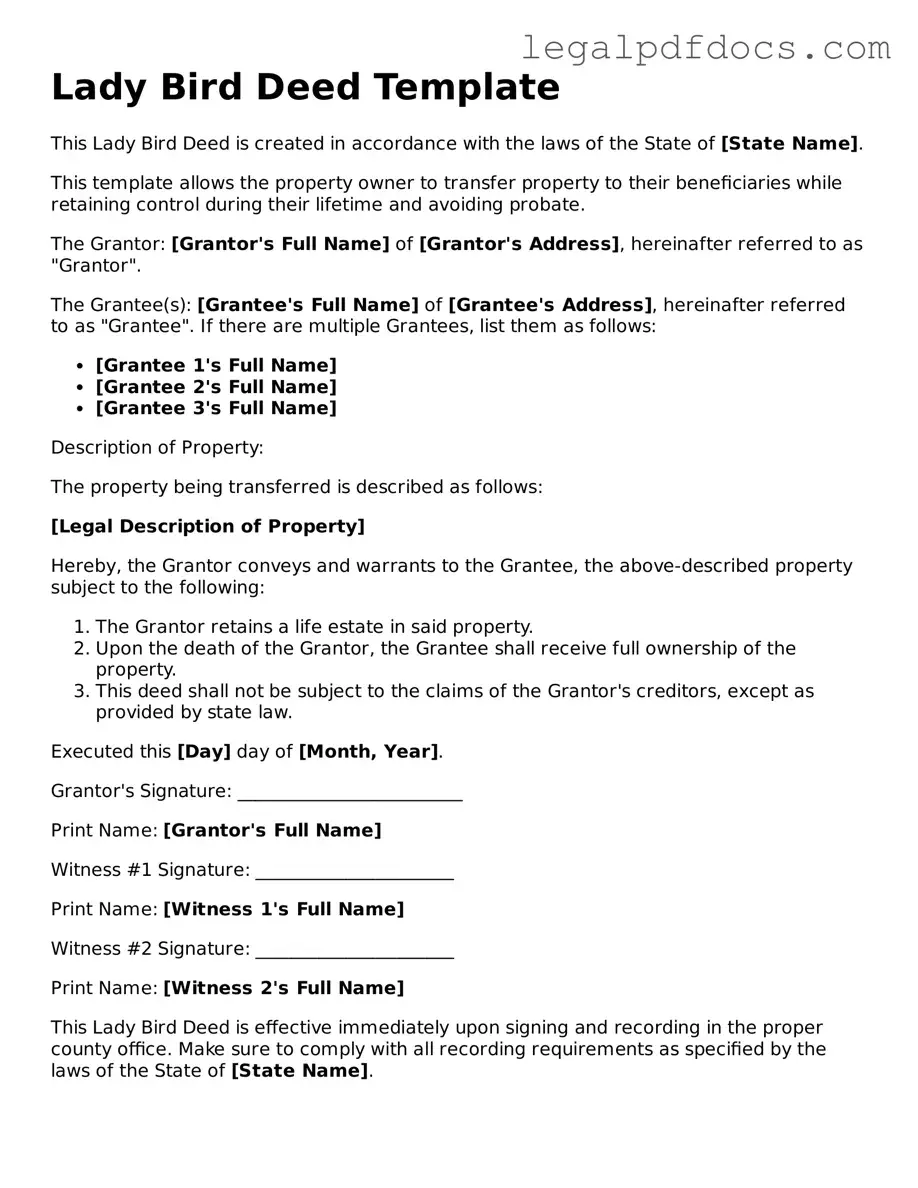The Lady Bird Deed, also known as an enhanced life estate deed, offers a unique way for property owners to manage their real estate while providing for their heirs. This type of deed allows individuals to retain full control over their property during their lifetime, including the right to sell, mortgage, or alter the property as they see fit. Upon the owner's passing, the property automatically transfers to designated beneficiaries without the need for probate, simplifying the transfer process and potentially saving time and money. Additionally, the Lady Bird Deed can help protect the property from being counted as an asset for Medicaid eligibility, which is a significant consideration for many individuals planning for long-term care. Understanding the key elements of this deed, including its advantages and limitations, can empower property owners to make informed decisions about their estate planning strategies.
